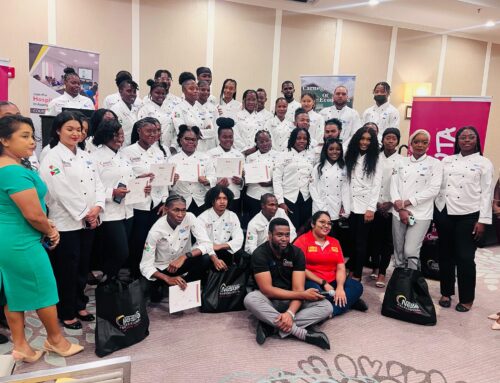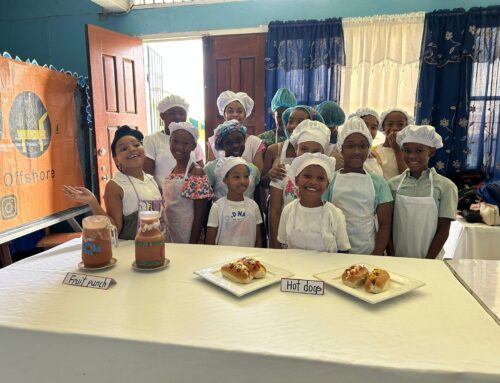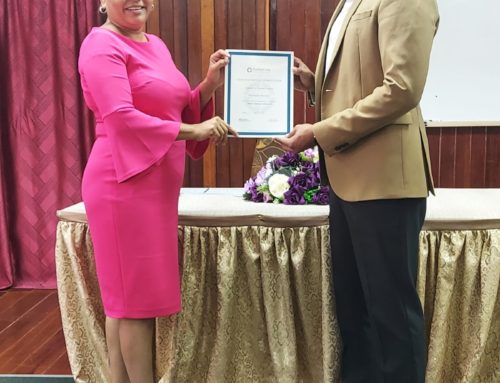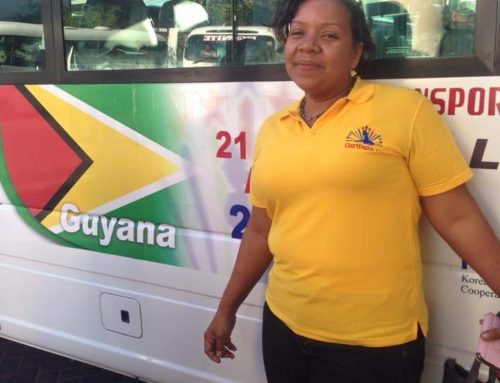The book, with over 30,000 copies sold worldwide, was initially a collaborative effort between the school and the then Ministry of National Development and Agriculture.
This project aimed to showcase the agricultural products of Guyana, while utilising the skills of the home economists to prepare local dishes; thus, the use of cassava and the experimentation of different cassava products were highlighted.
The fourth edition was produced in 1994, and reprints of the book were done in 2004 to mark the institution’s 70th anniversary.
The book is one of the many great success stories of the CSHE with each edition being modified to enrich the product offered. Each recipe was laboratory tested and all are proven authentic and delicious.
The meals are prepared and served to guests in the Hibiscus Training Restaurant and to clients from the catering service. The current edition adds recipes formulated by the Catering Department, Indigenous dishes and well-known Indo-Guyanese dishes.
“We are confident that when you use the ‘What’s Cooking in Guyana’ to prepare meals, you will experience a unique and enjoyable culinary experience of Guyanese Cuisine, CSHE Principal, Sharmaine Marshall, has said.
Speaking with the Guyana Chronicle on Saturday, Marshall said many people may not know about the book and even the services that are offered at the CSHE. Responses to the programmes offered have been slow recently due to the onset of the Coronavirus pandemic.
However, Marshall said the programmes are continuing online and that they have been finding innovative ways to get them done efficiently.
Copies of the book can be bought at CSHE, located at Lot 211 Durban and High Streets, Werk-en-Rust, Georgetown.
“The CSHE is at an important juncture in the history of the school. It is with great anticipation that we embrace the major upgrade of the programmes offered and future development of the institution,” Marshall expressed.
Formerly known as the Carnegie Trade School, the CSHE was founded on a grant by the Carnegie Trustee in 1933 and the first principal, Beatrix Briant, was entrusted with the task of establishing the school. Thanks to her “careful management and zeal”, the government assumed full responsibility for the school in 1937, Marshall informed.

During this time, a trading section was developed. This section produced custom made ladies’ garments and uniforms for government messengers. Large-scale catering was also undertaken on request.
In 1958, the school was renamed the Carnegie School of Home Economics. The curriculum, then, was aimed at improving the skills and attitudes essential for a good family and community life. Women were trained to fill roles as domestic helpers overseas and many graduates migrated to Canada and other countries. Some were sent as domestic helpers to Guyanese ambassador on their postings in this period.
In the 1960s, training of teachers in Home Economics was conducted at the school and in 1971, a separate catering section was established to give more specialised training in food preparation and service. Consequently, the public was offered economic and attractive meals of high standards in a delightful atmosphere.
During the period 1988 to 1990, financial and technical assistance were given by the Association of Canadian Community Colleges and the International Development Agency to enhance the Catering Programme. In 2000, the General Cosmetology Programme and the Garment Construction Programme were developed with the help of the Social Impact Amelioration Project.
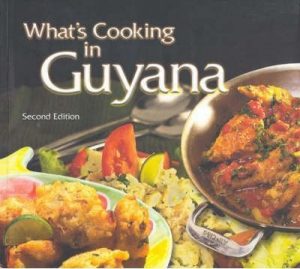
“Our objective is to offer services that continuously improve the lives of individuals and families. The programmes and services that are offered are continually upgraded, and as we embrace our achievements, we anticipate new programmes to meet the ever-increasing demands of the tourism and hospitality and other related industries. With this vision comes rebranding, retooling and expansion. Hence, despite the adversity of COVID-19, we remain committed to our primary goals of delivering high standards in teaching/learning for our full time programmes and part-time CareGivers programme,” Marshall said, adding, “We do anticipate the recommencing of the other part-time courses when it is safe to do so.”
-Adapted from Guyana Chronicle: https://guyanachronicle.com/2020/09/20/whats-cooking-in-guyana/


